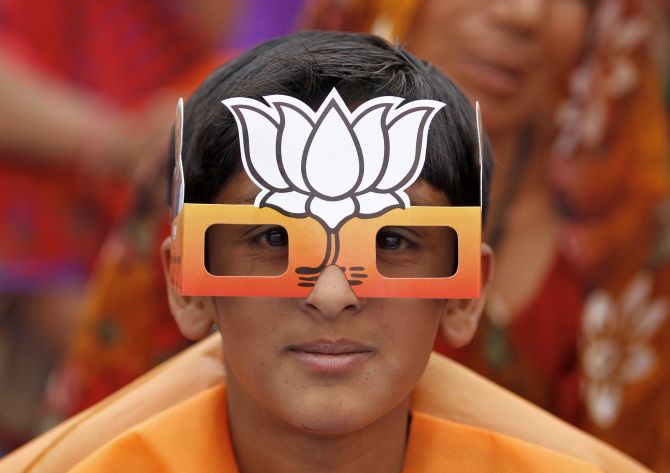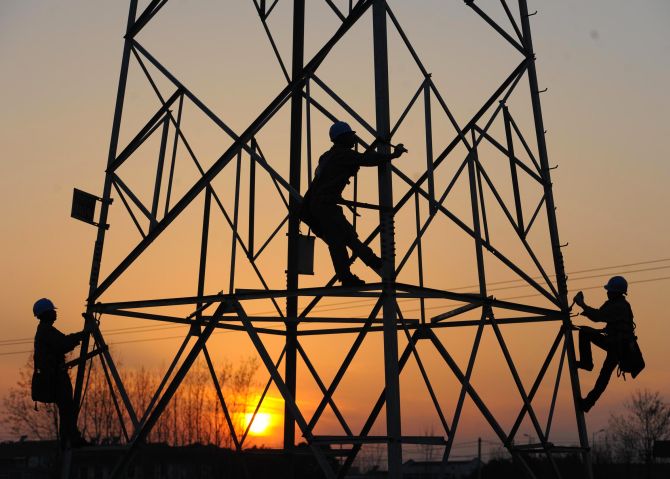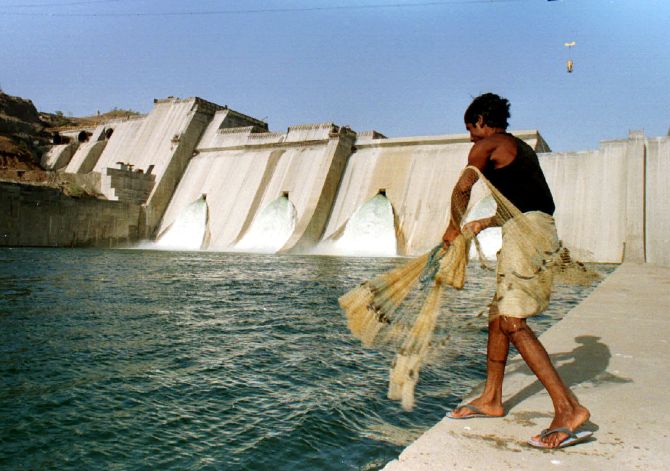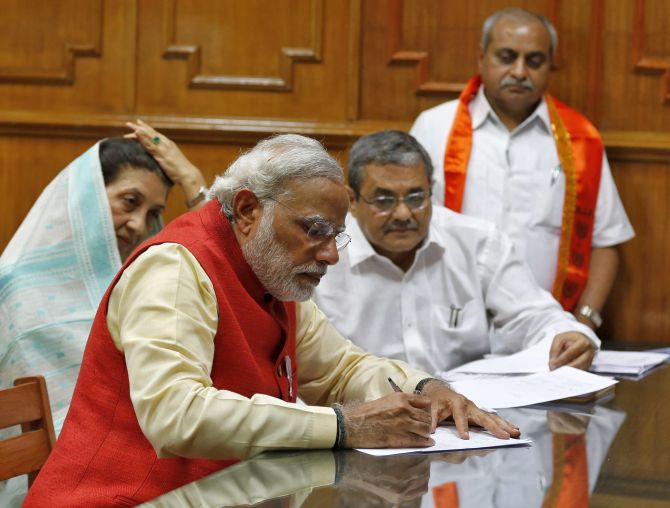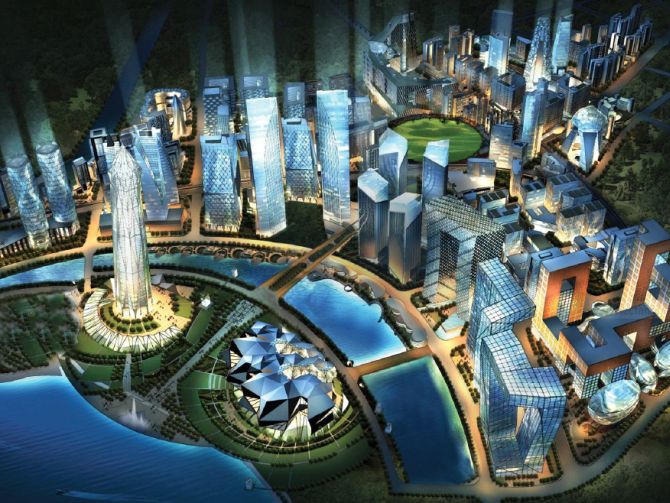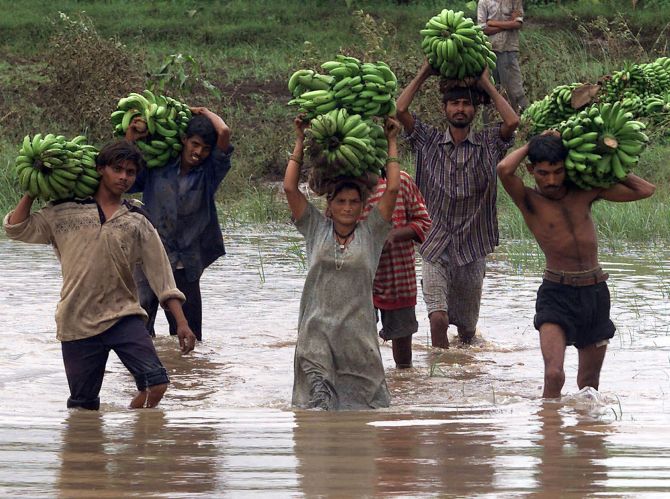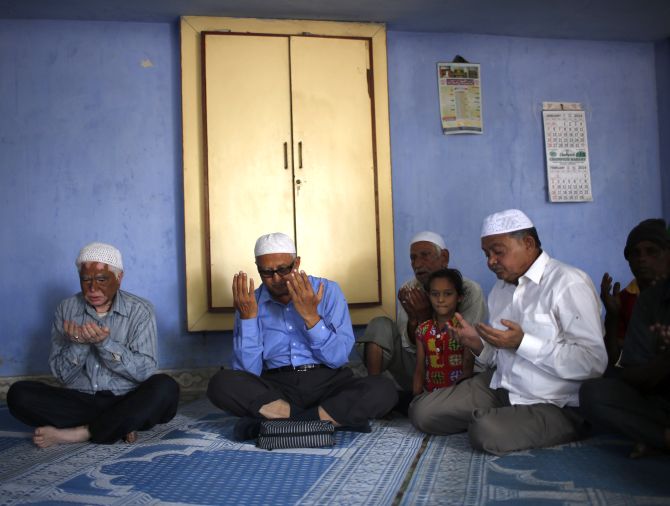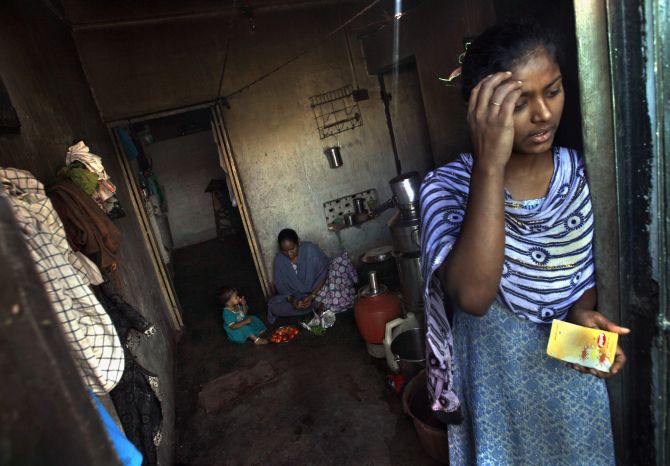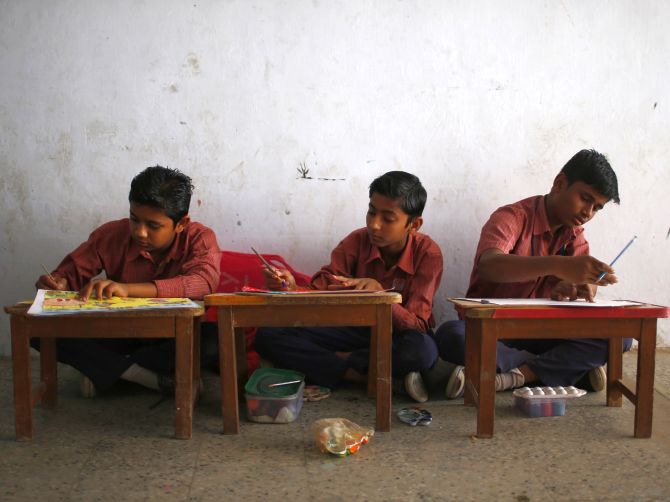 | « Back to article | Print this article |
How Modi made Gujarat flourish with funds from Delhi
The gigantic white squares and rectangles look like the work of an abstract sculptor with an absurd sense of scale. Set against a backdrop of fields, the enormous structures gleam in the morning sunshine.
Only the 20-meter high "Ford" sign indicates this is a factory. Set on 460 acres that used to be farmland, the factory dominates the landscape, even though it is less than half the size of Tata Motors' Nano complex nearby.
I travelled to Sanand to understand the "Gujarat model", a phenomenon so debated in this election that it seemed a candidate itself.
Was it an alternative management mantra that could breathe life into what the writer Jan Morris characterised as "the unimaginable bureaucracy of Delhi, sustained intravenously by interdepartmental memoranda… slumped immovable among its files and tea-trays"?
Or did it reflect the marketing prowess of prime ministerial candidate Narendra Modi, of whom Yamal Vyas, an adviser, would remark, "If he were an event manager, he would be the best in the world." The battle over whether Gujarat has seen a "differential acceleration" in its GDP growth rate during his tenure compared with the rest of India and the state's lagging human development indicators has raged among academia from New York to New Delhi.
Click NEXT to read more…
Reporting assistance by Vinay Umarji and Premal Balan
How Modi made Gujarat flourish with funds from Delhi
From the rooftop of his two-storeyed house, Rajendra Sinh Vaghela, a farmer, points to all the pucca houses that have come up in the village of Bol since the state industrial agency bought land from the farmers in 2010.
He rattles off the names of all the factories - Colgate, Hitachi Hi-Rel, Ford - that surround the village. His elder son, who is 21, has just woken up at midday after having worked a late shift at a vendor plant that supplies gearboxes for the Nano.
Vaghela and his brother sold 40 bighas of land where the Ford factory now sits. The government paid them Rs 28.56 lakh a bigha, making them crorepatis overnight.
But, Vaghela alternately revels in the new wealth and feels burdened by it. "We had never operated a bank account," he says.
Click NEXT to read more…
How Modi made Gujarat flourish with funds from Delhi
The new money means the family can afford a refrigerator, a solar water heater and an LPG gas range. In a refrain heard in many parts of rural Gujarat, he praised the predictability of electricity supply.
"Power is continuous," he says. "We used to pay Rs 300 earlier. Now we are paying Rs 800 per month, but this is as per our usage."
The day before I visited Sanand, the Indian Express quoted an engineer in Gujarat State Electricity Corporation crediting the funds from the central government's Rajiv Gandhi Grameen Vidyutikaran Yojana for the achievement of rural electrification.
Indeed, Gujarat's success in the past decade is because it has taken the money the centre is disbursing and adroitly made economic (and political) capital of it.
Click NEXT to read more…
How Modi made Gujarat flourish with funds from Delhi
A businessman and long-term resident of Vadodara, TNC Rajagopalan, says that the Modi government has benefited from the large transfer of funds from the central government in the past decade on everything from highways and rural road projects to urban renewal and rural electrification.
Gujarat's agriculture in the past several years has also seen a huge boost from the wide availability of water as a result of the Sardar Sarovar dam project.
Driving from Ahmedabad to Vadodara through lush fields and the occasional banana plantations feels almost akin to a journey through Kerala.
"Modi has been lucky but you can't deny him the credit," says Rajagopalan. "He made a success (of disbursements from the centre) and others didn't."
Click NEXT to read more…
How Modi made Gujarat flourish with funds from Delhi
Early in Modi's tenure as chief minister in 2004, he reportedly asked a senior civil servant in the state electricity company why it was struggling.
The political appointees on the board were the culprit, came the reply. Within a fortnight, according to an engineer at the meeting, "they were out."
A senior civil servant in the state administration says that Gujarat's success in acquiring large tracts of land in places like Sanand is because it pays the market price and involves state regulators from the very beginning.
"A regulator comes to the meetings and says, 'This is possible, this is not possible.' My experience is that investors like that," he says.
"Government here is quite egalitarian - by which I mean there is greater accessibility to the public and to business."
Click NEXT to read more…
How Modi made Gujarat flourish with funds from Delhi
He points to the state's ability to partner with countries like Japan - whose external trade agency has a local office - and Canada at one level while pushing civil servants to meet farmers and educationists in an outreach in districts that lasts for three days every year at another.
The bureaucracy has a reputation for being efficient, dating back to chief ministers such as Madhavsinh Solanki in the 1970s and 1980s and Chimanbhai Patel in the 1990s.
Modi has built on Gujarat's strengths of possessing a responsive bureaucracy and an innately entrepreneurial population.
This week an Accenture survey of the business environment in the states credited Gujarat with the best land acquisition polices with very limited government participation.
Click NEXT to read more…
How Modi made Gujarat flourish with funds from Delhi
Vyas, who has worked with Modi since 1991 and is a member of the state finance commission, says a key part of Modi's modus operandi is to prevent MLAs and their flunkeys from harassing officials.
Modi's other principal strength is an ability to run efficient meetings. "In meetings, he will ignore digressions altogether. I have never seen a more focused person," Vyas says.
When Modi led the Bharatiya Janata Party assembly poll campaign in the '90s, Vyas recalls that Modi spoke to each of the candidates between 5 am and 8 am every morning.
A partiality for overly large industrial estates with reliable electricity and roads, an ability to run a profitable public sector and a disregard for human rights concerns and media criticism mark Modi as being more in the mould of Chinese leaders.
Click NEXT to read more…
How Modi made Gujarat flourish with funds from Delhi
When the industrial corridor between Delhi and Mumbai was first being discussed, Modi was the lone chief minister who reportedly asked Amitabh Kant, who was then heading the project, whether Gujarat could offer more land.
But, land acquisition in Gujarat is now proving more problematic as the state is caught between the claws of higher expectations of land prices from farmers and their unwillingness to part with fertile fields and industry's belief that the price the Gujarat government charges for land in industrial estates is too high.
Last August, the state government had to massively reduce the size of the investment region in Mandal Becharaji in Mehsana to a fifth of its original size of 50,000 hectares after the majority of the 44 village bodies in the area opposed the plan.
In an investment region in Dholera, memoranda of understanding were signed with companies three years ago, but the project is still stuck at the land acquisition stage.
The GujaratInternationalFinanceTecCity, designed by a Chinese firm, has had few takers.
Click NEXT to read more…
How Modi made Gujarat flourish with funds from Delhi
As in China where the west has struggled while coastal regions boomed, Gujarat too has witnessed uneven development, particularly in central and south Gujarat where tribals live.
In Ahmedabad, it is hard not to be shocked by the number of adivasis living a destitute existence on the street, having sought to flee their high indebtedness in the countryside for a supposedly better existence in the city.
"The adivasis in Gujarat are still very undernourished," says Yoginder Alagh, a former union minister in the Deve Gowda government in the '90s and agricultural economist.
Alagh says the poverty rate among tribals in Gujarat is higher than that in states like Madhya Pradesh and Uttar Pradesh.
Click NEXT to read more…
How Modi made Gujarat flourish with funds from Delhi
In agriculture, the challenges are mounting. In the past decade, Gujarat, Alagh says, has reaped the benefits of the Sardar Sarovar dam, which in effect created a river to run through the state and boosted its agricultural growth rate to 6 per cent.
Now, it must direct its energies at building lower-level channels and distributaries managed by cooperatives, but he says there is little evidence this is happening even as the growth rate in agriculture has slowed to 4.8 per cent in 2011-2012 by his estimates.
One of the paradoxes of this unipolar election is that Modi has been excessively lionised and excessively criticised for the strengths and weaknesses of the state he governs.
The public-private enterprise model and cooperatives go back decades in Gujarat. I was reminded of this when I stopped at Amul in Anand. Lal Bahadur Shastri's note from 50 years ago read, "Deeply impressed. A highly efficient dairy indeed!" and so it is to this day.
Last Saturday, R S Sodhi, the managing director of the cooperative, was good-naturedly fielding calls from the press about a Rs 2 increase in milk prices.
Sodhi explained that procurement prices had gone up, so these had to be passed on to consumers.
"In no other state can someone decide without government approval. We do it based on commercial factors," he says. Amul was founded in the 1940s.
Click NEXT to read more…
How Modi made Gujarat flourish with funds from Delhi
The Gujarati propensity for trade, activist Ganesh Devy points out, dates back to the time of Julius Caesar. He was criticised by the Senate for the high imports of silk from Bharuch.
For a first-time visitor to Ahmedabad, the politeness of the local population juxtaposed with the sense of a city where the garbage collectors are permanently on strike are lasting impressions.
Such is the hype that surrounds Ahmedabad today that I imagined a Singapore by the Sabarmati, but litter is everywhere.
It dominates the ground floor of government offices in Gandhinagar where large globes and site models used during the Vibrant Gujarat summit lie trashed and filthy, soiled with bird droppings.
The foyer of one of the city's poshest clubs looks like a truck has rammed through it as a chaotic refurbishment takes place. And every red-hewed corner in the corridors of a smart office building that is home to BNP Paribas and the Exim Bank is a spittoon.
Click NEXT to read more…
How Modi made Gujarat flourish with funds from Delhi
Equally hard to miss in a state otherwise so easy-going is an ugly religious intolerance, even in 2014.
This tradition long predates Modi's innings as chief minister. Major riots in 1969 and in the 1980s and early 1990s scarred the psyche of the state - 2002 was the worst of the lot and the most thoughtfully targeted.
One afternoon, I receive a call from a physiotherapist seeking to set up an appointment.
The person is politeness itself till I say where my hotel is. It is in a 'Muslim neighbourhood', deemed unsafe by the physio after 7 pm.
That night, a group of male and female hotel guests and I take a walk between 10 pm and 11 pm through streets that are packed with tables set out for al fresco dining that are close to the old havelis in eastern Ahmedabad.
"Thirty years ago I saw women moving about very safely, but it is only in the past few years that it is talked about. That is powerful propaganda at work," Devy, the tribal activist, remarked.
Click NEXT to read more…
How Modi made Gujarat flourish with funds from Delhi
I had arrived in Ahmedabad on polling day in Gujarat, April 30. Among those voting amid record turnout in 40 years was Shakilabanu Firoz Ahmed, 36, who voted for the first time in a decade.
Asked why she had not voted in two previous general elections, she replied, "My mind was sad."
In the riots of 2002, mobs of thousands of men came rushing through the tiny lanes where she and other Muslims live in Naroda Patiya and killed nearly 100 residents.
Shakilabanu had watched from a rooftop as her mother was burned alive with petrol and her two-month-old nephew was snatched from her sister-in-law's hands and thrown into a fire.
She lost eight members of her family. She tears up retelling the story while a bystander grumbles that the press is making her live through it all over again.
As I walked through the lanes, I am reminded of similar eyewitness accounts from the pogrom against Sikhs in Trilokpuri in Delhi in 1984, an indelible memory as I happened to be in college in the capital then. Behind the settlement is the Gujarat state bus company's graveyard for old buses.
Image for representation purpose only.
Click NEXT to read more…
How Modi made Gujarat flourish with funds from Delhi
As I walked back, I chanced upon half a dozen Muslim teenagers working on sewing machines. When I asked if they no longer go to school, they looked at me as if I'm stupid for believing they might have dropped out.
This was just "time-pass" during the holidays to help a relative meet his orders for colourful anarkali salwar kameezes.
They intended to finish school and get better work. Hanging over this election has been the impending demographic disaster that awaits this country when millions of young people find their job aspirations unachievable.
Among the gloomiest statistics on India is this: almost a third of the 1.2 billion population, like these young boys, are between the age of 10 and 24.
There are too few jobs for them and they often have the wrong skills or no skills for the jobs on offer.
Modi's track record of speedier governance in Gujarat suggests he is the candidate most likely to at least face up to this unsolvable crisis, but I imagined none of the youngsters or Shakilabanu would see it that way.
Image for representation purpose only.
Click NEXT to read more…
How Modi made Gujarat flourish with funds from Delhi
For India, creating 12 million new jobs annually at a time when factories make do with far fewer people than ever before, companies are overburdened with debt and other developing nations with more energetic leaders and bureaucrats have a huge lead in export markets is an impossible task.
The politics - and much else besides - will get uglier when the country fails.
In Naroda Patiya, there is a billboard for the five-storeyed apartment blocks, some of which inauspiciously overlook the desolate bus dumping ground where a shallow, dry well provided a convenient place to burn several people fleeing the tenements nearby.
"City Centre Arcade and Homes - A Business with Unlimited Growth. 24x7 Security, 24x7 water supply," the hoarding reads. It was hard not to see it as a metaphor for this election and the choices we have had to make.

